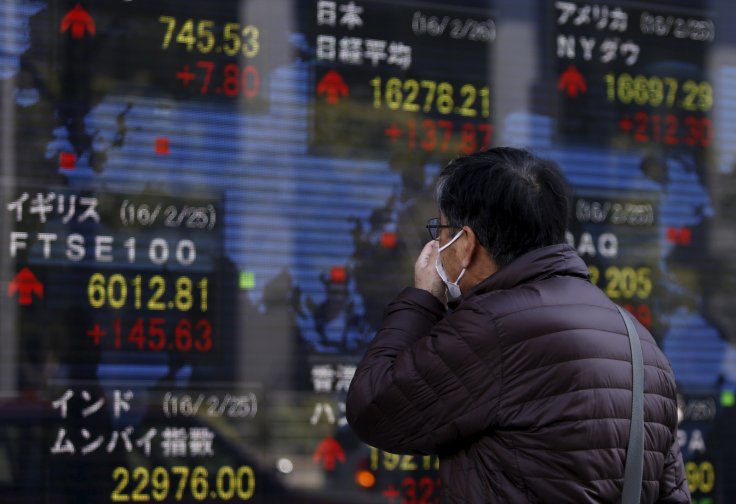
Asian stocks rallied on Monday as positive Chinese factory gauges and signs of progress in Sino-U.S. trade talks supported sentiment, although another defeat for British Prime Minister Theresa May's proposed Brexit deal added to sterling's woes.
MSCI's broadest index of Asia-Pacific shares outside Japan added 1 percent and the Shanghai Composite Index rallied 1.7 percent.
Australian stocks climbed 0.8 percent, South Korea's KOSPI gained 1 percent and Japan's Nikkei advanced more than 2 percent.
The markets took heart after China's official purchasing managers' index (PMI) released on Sunday showed factory activity unexpectedly grew for the first time in four months in March.
A private business survey, the Caixin/Markit PMI, released on Monday also showed the manufacturing sector in the world's second biggest economy returning to growth.
If sustained, the improvement in business conditions could indicate that manufacturing is on a path to recovery, easing fears that China could slip into a sharper economic downturn.
"Our view is the impact of policy easing is gradually kicking in, pushing up sequential growth indicators such as PMI first," wrote China economists at Bank of America Merrill Lynch.
"In particular, the larger-than-expected tax and fee cuts and improving financial conditions have likely helped boost business sentiment in the manufacturing space."
Stocks in Asia also took their cues from Wall Street, with the S&P 500 posting its best quarterly gain in a decade on Friday amid trade optimism. [.N]
The United States and China said they made progress in trade talks that concluded on Friday in Beijing, with Washington saying the negotiations were "candid and constructive" as the world's two largest economies try to resolve their drawn out trade war.
"The ongoing U.S.-China trade conflict has provided a steady stream of conflicting signals for the markets. But as a whole the negotiations appear to be headed towards a conclusion," said Soichiro Monji, senior strategist at Sumitomo Mitsui DS Asset Management.
"Hopes that the United States and China would reach an agreement on trade as early as this month are enabling stocks to begin the first quarter on a positive tone."
In the currency market, the dollar index against a basket of six major currencies was little changed at 97.260 after going as high as 97.341 on Friday, its strongest since March 11.
The greenback had benefited from the flagging pound, which was on track to post its fourth day of losses in the wake of the ongoing Brexit saga.
Sterling took its latest knock after British lawmakers rejected Prime Minister May's Brexit deal for a third time on Friday, sounding its probable death knell and leaving the country's withdrawal from the European Union in turmoil.
The pound was down 0.1 percent at $1.3022.
The Australian dollar advanced 0.4 percent to $0.7124. The Aussie is sensitive to shifts in the economic outlook for China, the country's main trading partner.
The euro was a touch higher at $1.1227 while the dollar rose 0.3 percent to 111.17 yen.
Safe-haven government bonds retreated as risk aversion in the broader markets eased.
The benchmark 10-year U.S. Treasury yield edged up to a six-day high of 2.444 percent, pulling away from a 15-month low of 2.340 percent brushed on March 25.
The Treasury 10-year yield had sunk as risk aversion, driven by concerns about a global economic slowdown, gripped financial markets towards the end of March.
Crude oil prices added to Friday's gains, with U.S. West Texas Intermediate (WTI) futures gaining 0.5 percent to $60.45 per barrel.
Oil prices posted their biggest quarterly rise in a decade during the January-March, as U.S. sanctions against Iran and Venezuela as well as OPEC-led supply cuts overshadowed concerns over a slowing global economy.








